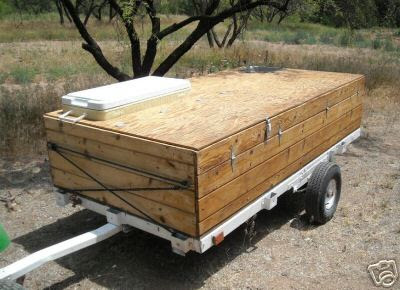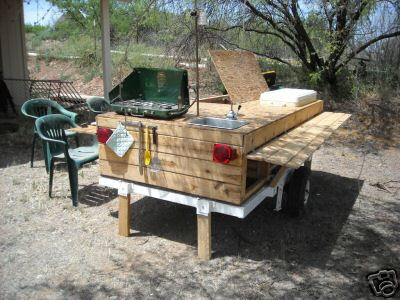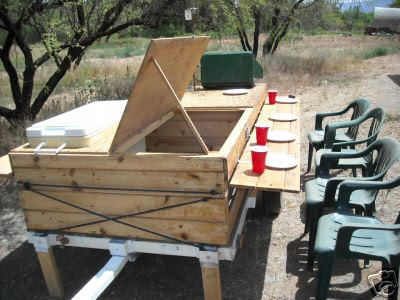Here's the companion story to the photo of the judges ...By Gary Nichols, Center for Information Dominance Public Affairs
PENSACOLA, Fla. (5/14/2008) (NNS) -- Ten food service professionals throughout the Navy's Southeast Region concluded a two-week course in advanced culinary techniques and received certifications from the American Culinary Federation Inc. (ACF) at the Corry Station Galley, May 9.
The two-week course, which was sponsored by Navy Regional Food Services Office Pensacola and First Coast Technical College of St. Augustine, Fla., pushed the food service professionals, all of them veterans in their field, beyond what they had experienced in their careers to date.
"The ultimate goal is to help improve the morale of our Sailors and warfighters," said Brett L. Harris, culinary instructor, chef and owner of the Jacksonville, Fla.-based World Grill. "If you give them quality food it helps them feel better and they work better, and they feel they're treated with dignity and respect."
The active-duty military culinary specialists and food service employees came from Naval Air Station (NAS)Pensacola; Naval Support Activity Panama City; Naval Construction Battalion Center (NCBC) Gulfport, Miss; and Naval Station Guantanamo Bay, Cuba.
The two-week course offered refresher training in the basics of nutrition, sanitation and supervision. The students also received advanced coursework in knife skills, menu writing and professional cooking techniques.
The culinary specialists had to demonstrate proficiency in making stocks, sauces, consommé, salads, sauces, artichokes, steaks, poached fish and rice pilaf. They also had to demonstrate their mastery of the skills required to fillet fish, and carve chicken and steaks.
"It was a very liberating experience," Culinary Specialist 2nd Class (SW) Larozzo Shugart, of NCBC Gulfport, said. "I learned a lot."
The ACF is the premier professional chefs' organization in North America, with more than 230 chapters nationwide and 20,000 members. A certification from the ACF is a symbol that reflects his or her professionalism and culinary expertise. The certification verifies that professional chefs and cooks have the knowledge and skill required for elevated culinary positions and that their food is prepared to the highest standards.
Seven culinarians were attempting to earn a Sous Chef certification, two were attempting to earn a Certified Chef de Cuisine certification, and one was attempting to earn a Certified Executive Chef certification.
"I'm taking baby steps," Culinary Specialist 1st Class (SW) Bogan Burnett, of NAS Pensacola Galley, said. "If I become an executive chef, but I can't run a kitchen, what good is that?"
The cost of the certifications for the active-duty military food service professionals was paid for by the Navy Credentialing Opportunities On-Line (COOL) program. The program is is open to Sailors from every rating. Navy COOL defines civilian credentials that best map to a Sailor's rating and training, and outlines the path, work and experience required to achieve them.
Culinary Instructor and First Coast Technical College Administrator David Bearl said he has taught culinary arts to Navy culinary specialists for the past 10 years and has seen how well-prepared food can positively affect Sailors and Marines.
This group, Bearl said, like many others he has taught at more than 30 ships and naval installations, are highly skilled and motivated.
"They're wonderful. They're disciplined and they're on task," Bearl said. "In classes like this they're here because they want to be here. I love working with the military."
On the two practical test days, the atmosphere in the galley was definitely "kicked up a notch" as the candidates prepared their food.
Bearl and Harris, clipboards in hand, scrutinized the candidates while they chopped, minced, seared, stirred and flipped. After the food was plated and tasted, both judges gave a thumbs-up to each dish.
The grueling written examination came on the final day. However, the candidates were well-prepared and highly motivated. Each candidate successfully passed their written exam and received the certifications they were vying for.
"We hand-selected the people who we thought were most deserving of this opportunity because of their leadership qualities," said Paul Poling, retired Navy chief mess management specialist and NAS Pensacola Food Service work inspector. "My hope is that they will go back into the kitchen and pass on their new skills to their food service colleagues."
 A M-59 US Army field range outfit is being offered for sale on eBay.com. The seller is asking $350 with the "Buy it Now" feature. He will also entertain the best offer. Based on the description, the unit may have all the pots, pans and utensils included. However, you'll have to check with the seller to verify this.
A M-59 US Army field range outfit is being offered for sale on eBay.com. The seller is asking $350 with the "Buy it Now" feature. He will also entertain the best offer. Based on the description, the unit may have all the pots, pans and utensils included. However, you'll have to check with the seller to verify this.













